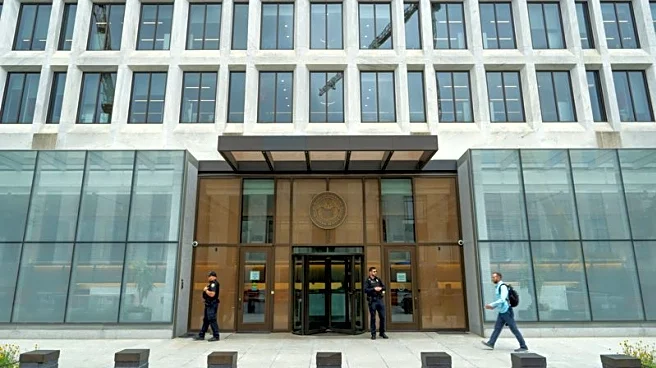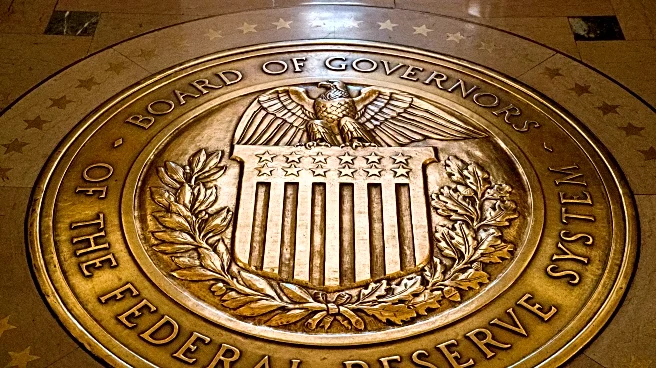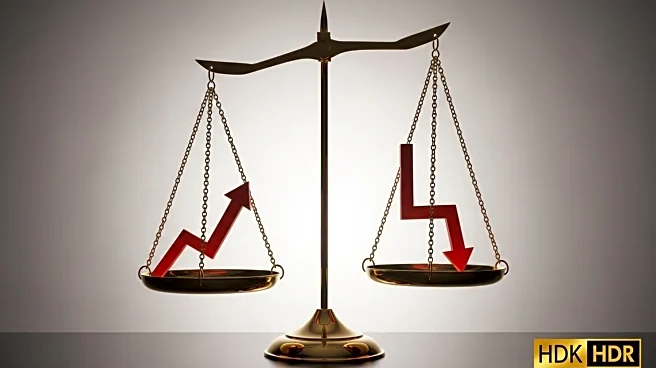What's Happening?
The Federal Reserve has cut interest rates by 0.25%, bringing them to a range of 4.00% to 4.25%. This decision reflects concerns about a weakening job market and the potential for rising unemployment. The move was supported by most of President Trump's appointees, although new Governor Stephen Miran dissented, favoring a larger cut. The Fed's projections indicate two more rate cuts are expected this year, as officials shift focus from inflation risks to supporting economic growth and employment.
Why It's Important?
The rate cut underscores the Fed's response to economic challenges, including the impact of trade policies and a slowing labor market. By lowering borrowing costs, the Fed aims to stimulate economic activity and prevent a rise in unemployment. This decision highlights the central bank's balancing act between managing inflation and supporting growth. The move could influence financial markets, affecting interest rates, currency values, and investment strategies. It also reflects the Fed's adaptation to changing economic conditions and political pressures.
What's Next?
The Fed's decision sets the stage for further rate cuts, with two more reductions anticipated this year. These actions will depend on economic data and the impact of trade policies. The Fed's approach will be closely monitored by investors and policymakers, as they assess the central bank's strategy for managing economic risks. The outcome of these decisions will shape the economic outlook, influencing growth prospects and inflation expectations.












